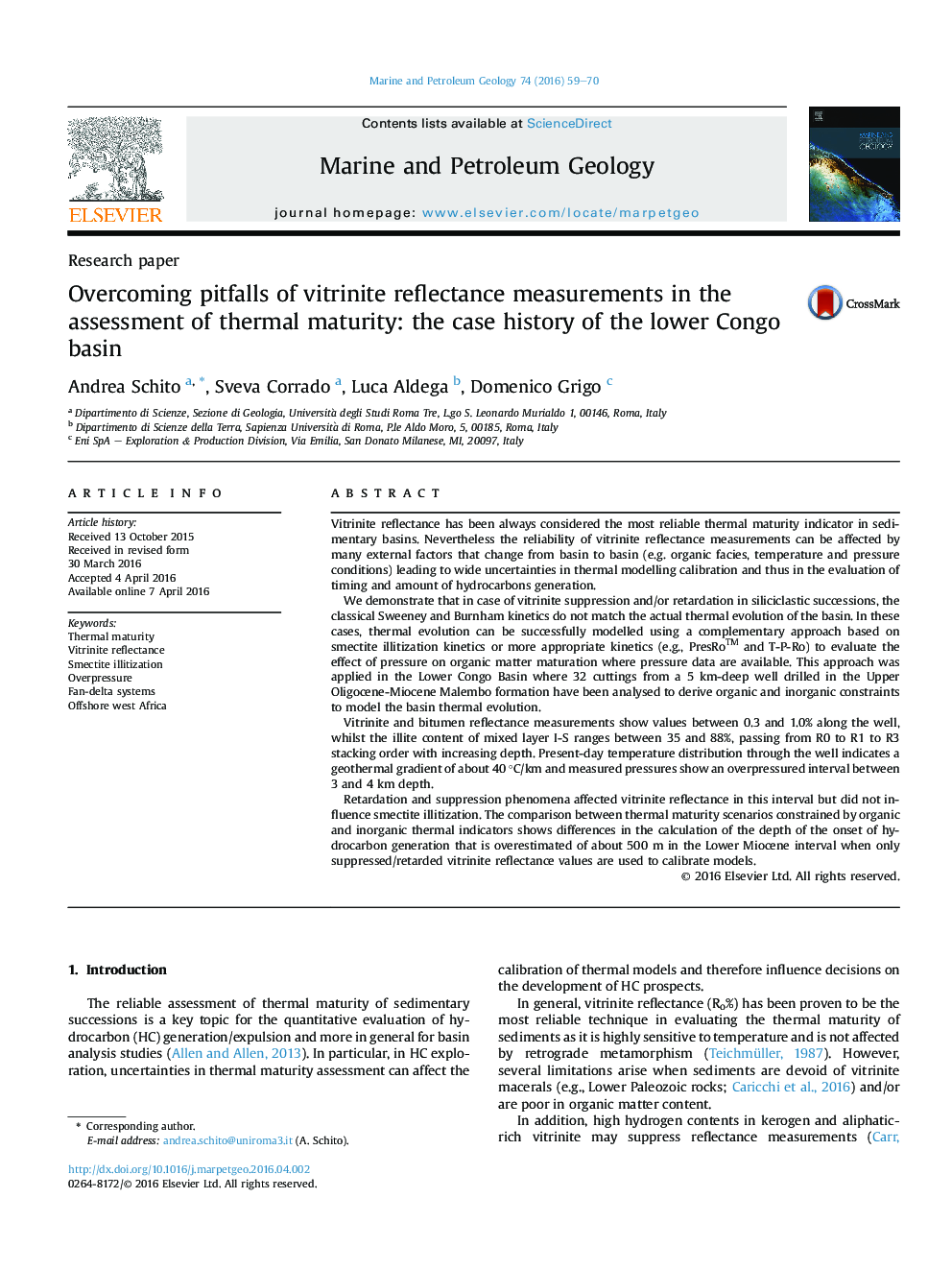| کد مقاله | کد نشریه | سال انتشار | مقاله انگلیسی | نسخه تمام متن |
|---|---|---|---|---|
| 4695408 | 1637153 | 2016 | 12 صفحه PDF | دانلود رایگان |
• Organic and inorganic indicators were applied to assess thermal maturity.
• We compared maturity trends derived from optical and XRD analyses.
• Vitrinite reflectance is suppressed/retarded.
• Smectite illitization is a more reliable thermal indicator in the Lower Congo Basin.
Vitrinite reflectance has been always considered the most reliable thermal maturity indicator in sedimentary basins. Nevertheless the reliability of vitrinite reflectance measurements can be affected by many external factors that change from basin to basin (e.g. organic facies, temperature and pressure conditions) leading to wide uncertainties in thermal modelling calibration and thus in the evaluation of timing and amount of hydrocarbons generation.We demonstrate that in case of vitrinite suppression and/or retardation in siliciclastic successions, the classical Sweeney and Burnham kinetics do not match the actual thermal evolution of the basin. In these cases, thermal evolution can be successfully modelled using a complementary approach based on smectite illitization kinetics or more appropriate kinetics (e.g., PresRoTM and T-P-Ro) to evaluate the effect of pressure on organic matter maturation where pressure data are available. This approach was applied in the Lower Congo Basin where 32 cuttings from a 5 km-deep well drilled in the Upper Oligocene-Miocene Malembo formation have been analysed to derive organic and inorganic constraints to model the basin thermal evolution.Vitrinite and bitumen reflectance measurements show values between 0.3 and 1.0% along the well, whilst the illite content of mixed layer I-S ranges between 35 and 88%, passing from R0 to R1 to R3 stacking order with increasing depth. Present-day temperature distribution through the well indicates a geothermal gradient of about 40 °C/km and measured pressures show an overpressured interval between 3 and 4 km depth.Retardation and suppression phenomena affected vitrinite reflectance in this interval but did not influence smectite illitization. The comparison between thermal maturity scenarios constrained by organic and inorganic thermal indicators shows differences in the calculation of the depth of the onset of hydrocarbon generation that is overestimated of about 500 m in the Lower Miocene interval when only suppressed/retarded vitrinite reflectance values are used to calibrate models.
Journal: Marine and Petroleum Geology - Volume 74, June 2016, Pages 59–70
